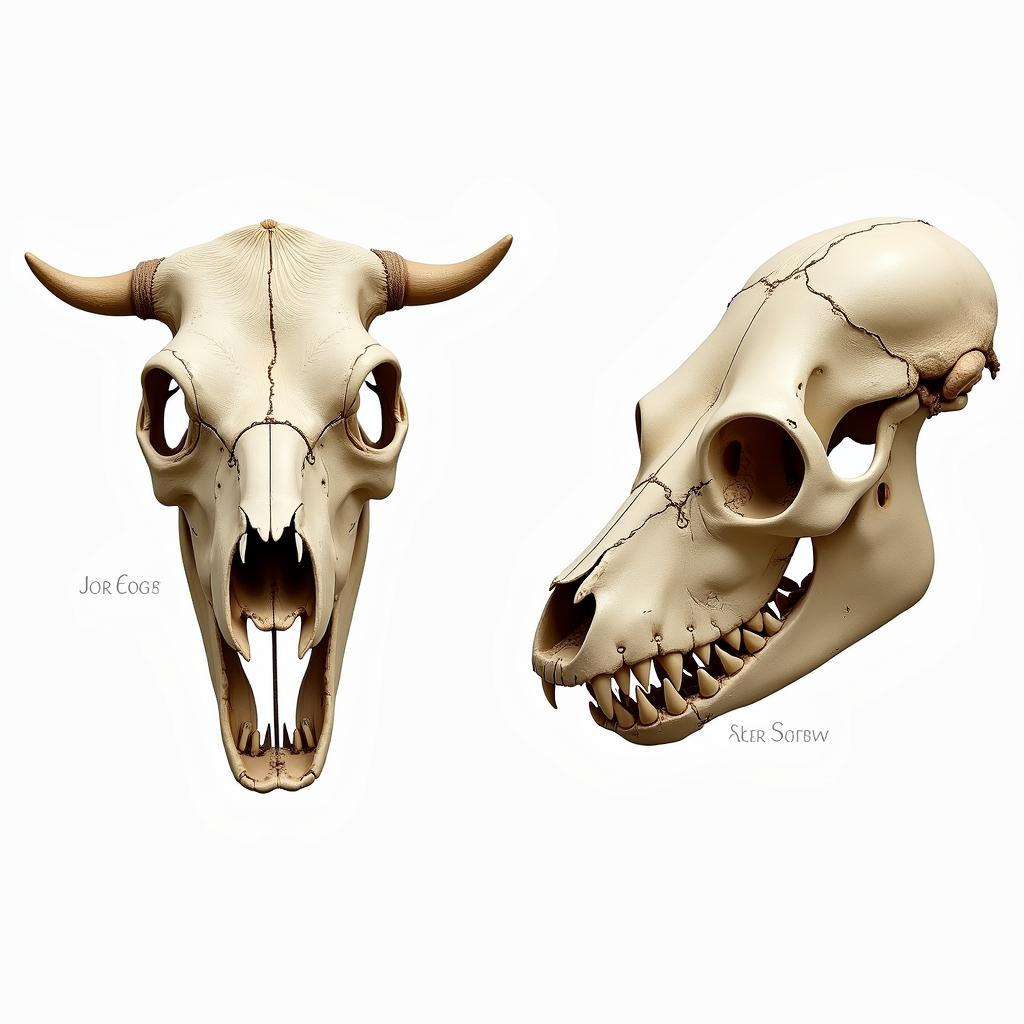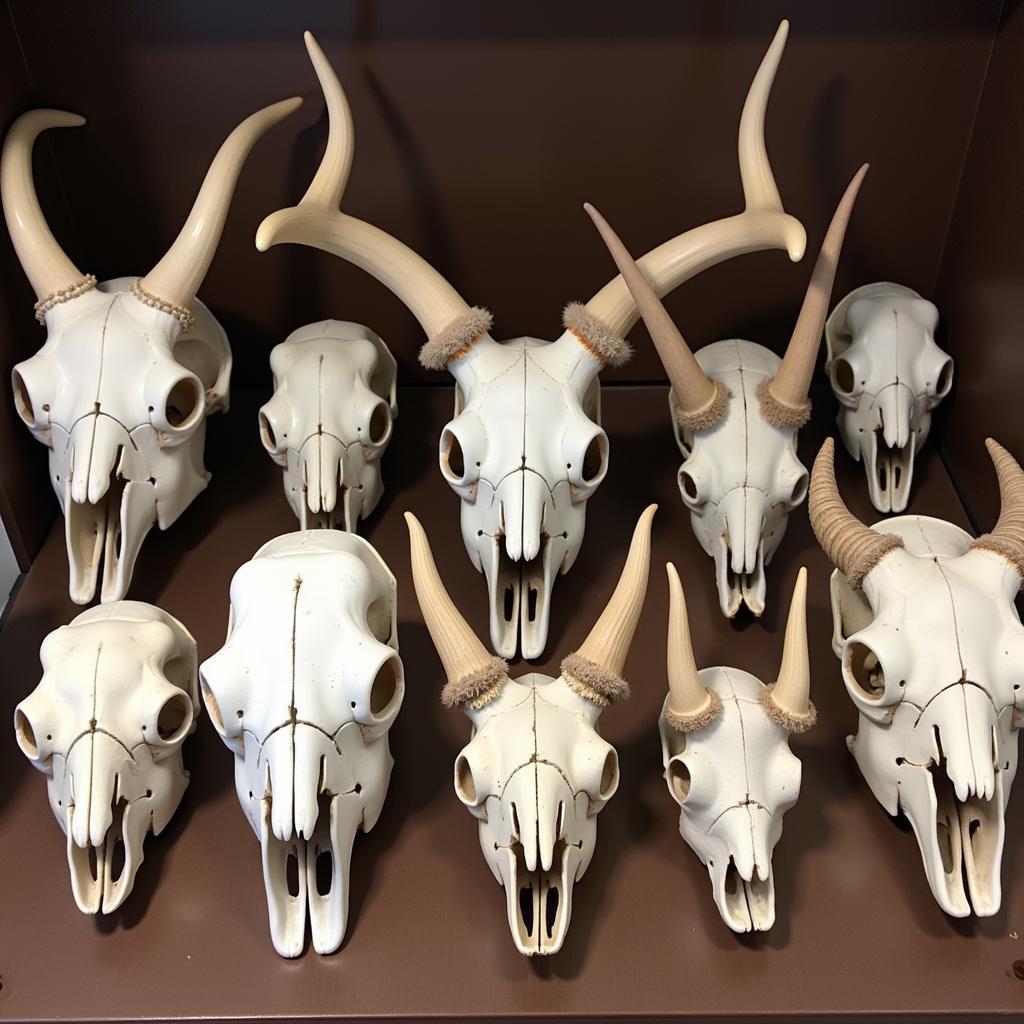Animal skulls are fascinating structures that provide a wealth of information about an animal’s life, diet, and evolutionary history. They are often used by scientists, researchers, and enthusiasts alike for identification, comparative anatomy studies, and even artistic inspiration.
Whether you’re a seasoned biologist or simply curious about the natural world, this comprehensive guide will equip you with the knowledge to appreciate and understand the complexities of animal skulls.
The Significance of Animal Skull Anatomy
Every skull is made up of numerous bones that are fused together to form a rigid framework. The specific shape, size, and arrangement of these bones vary widely between species, reflecting their unique adaptations and ecological roles.
 Comparison of herbivore and carnivore skulls
Comparison of herbivore and carnivore skulls
For instance, carnivores like wolves have powerful jaws and sharp teeth designed for tearing flesh, while herbivores like cows possess flat molars ideal for grinding plant matter. By examining these features, we can gain valuable insights into an animal’s dietary habits and ecological niche.
Key Features for Animal Skull Identification
Identifying animal skulls can be a rewarding challenge. Here are some key features to look for:
- Size and Shape: The overall size and shape of the skull can narrow down the possibilities considerably. Is it long and slender like a fox or short and rounded like a badger?
- Teeth: Teeth are incredibly informative. The type, number, and arrangement of teeth can reveal whether an animal is a carnivore, herbivore, omnivore, or insectivore.
- Eye Sockets: The size and position of the eye sockets can indicate an animal’s predatory behavior and vision capabilities. Forward-facing eyes often suggest a predator, while laterally placed eyes are common in prey animals.
- Nasal Passages: The size and complexity of the nasal passages can provide clues about an animal’s sense of smell.
- Jaw Structure: The structure of the jaw, including the presence of certain bones and muscle attachments, can indicate the strength and mechanics of an animal’s bite.
Using Animal Skulls as Educational Tools
Animal skulls are invaluable educational resources. They offer a tangible way to learn about:
- Evolutionary Relationships: By comparing skulls from different species, we can trace evolutionary lineages and understand how animals have adapted to their environments over time.
- Biodiversity: Examining a diverse collection of skulls highlights the incredible variety of life on Earth and the unique adaptations of different species.
- Conservation: Studying animal skulls can raise awareness about endangered species and the importance of protecting biodiversity.
 Collection of different animal skulls
Collection of different animal skulls
Ethical Considerations and Resources
When handling animal skulls, it’s crucial to prioritize ethical sourcing. Always obtain skulls from reputable sources that prioritize ethical and sustainable practices.
For further exploration, consider these resources:
- Museums: Natural history museums often house extensive skull collections and offer educational exhibits.
- Online Databases: Several online databases provide detailed information and images of animal skulls.
- Field Guides: Field guides specific to your region can help you identify skulls found in the wild.
Conclusion
Animal skulls offer a captivating glimpse into the natural world. By learning to identify and interpret their features, we gain a deeper appreciation for the diversity of life on Earth and the remarkable adaptations that have allowed animals to thrive in their respective environments.